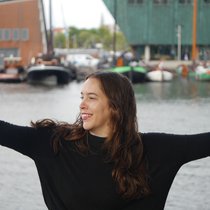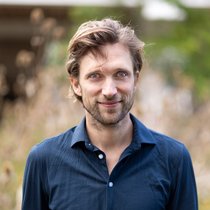The circular economy is a rapidly growing concept that has gained attention in recent years as a sustainable alternative to the traditional linear economy. The circular economy is based on reducing waste, maximizing resource efficiency, and preserving the value of products, materials, and resources.
AMS Institute plays a crucial role in the Week of the circular economy as the institute is at the forefront of research and innovation in the field of circularity. We are dedicated to finding solutions to the complex challenges cities face, focusing on circular economy and sustainable urban development.
The week of the circular economy is an opportunity to celebrate our progress toward a more sustainable future and to continue to drive change toward a more circular economy. The 3 projects we will highlight in this article are just a small sample of the many innovative and impactful initiatives worldwide. They demonstrate that a circular economy is not only possible but also necessary for a sustainable future. By highlighting these circular projects, we aim to inspire and encourage others to adopt circular practices in their own lives and businesses.
Circular solar panels for the doughnut economy
In this project, we are extending the lifespan of solar panels by giving discarded panels a second life in Amsterdam Southeast.
The Project Goal
The goal of this project is to help the energy transition. To accomplish this, we are setting up a living lab in Amsterdam Southeast, where the re-use of discarded solar panels is connected to social goals. These include harnessing the power of solar panels to fight energy poverty in the neighborhood, and creating apprenticeship programs where unemployed people can find a meaningful job in the energy transition. The ultimate goal is to organize a regional supply chain collaboration through which these circular solutions for solar panels can be scaled and made an integral part of the regional economy.
Click here to read more about this project.
“We all see and believe that solar panels will contribute to the energy transition. However, as many other innovative solutions, solar panels do not represent a fully sustainable process by themselves. We must look at how are they fabricated, where, in what conditions, but mostly how to build the best of them to avoid more e-waste. We have the opportunity to go ahead of time and think on the value chain and how to think on a resilient long term solution”
Irene Luque Martin
Former Project Manager Research & Innovative projects at AMS Institute

Circular Paving in Amsterdam: reusing pavement tiles
In any city, the construction and maintenance of the roads has a high environmental impact. This impact is mainly caused by the production and transportation of concrete materials like paving stones and tiles. The cement and concrete industry is the world’s third largest emitter of CO2 and of other forms of industrial air pollution like nitrogen oxides (NOx).
To reduce the environmental impact of road construction, the municipality of Amsterdam wants to make re-use of pavement stones the new standard. This means that when a street needs to be repaved, the old/used concrete tiles will be taken out, cleaned and recoated on location, and are then placed back. Preliminary calculations suggest that such a re-use scenario yields 80% CO2 reduction compared to conventional replacement with new tiles and recycling of the old ones. Accordingly, re-using concrete pavers is crucial for reaching the city’s policy goals in circularity (use 50% less primary raw materials by 2030) and climate change (cut CO2 emissions by 55% in 2030).
Click here to read more about this project.
“For energy-intensive products, like concrete pavers, re-using the product has much more impact than recycling. This is the way forward. In fact, we have to consider circularity in the infra sector, if we want to reach our climate goals.”
Joppe van Driel
Program Developer
COMPRO: Creating a fully circular and bio-based building material from wastewater resources
We can produce high-value building materials from resources derived from organic waste-streams. The COMPRO project upcycles cellulose-fibres from retrieved toilet paper and a biological glue produced by bacteria in the Nereda® wastewater treatment process.
There is a strong need to switch from a linear 'make, waste, dispose' model, to a fully circular model for the city of Amsterdam. Amsterdam has committed to becoming fully circular by the year 2050. Circularity means to rethink and redesign the flow of resources such as building materials, water, food and energy that drive urban activities.
To illustrate, in Amsterdam, a million people flush their toilets every single day. When flushing down about 33L of water – that’s per person per day –cellulose-rich toilet paper also goes down the drain. This adds up to 175.000.000kg of toilet paper per year, which can be sieved by wastewater treatment plants.
What if we could re-use valuable resources like the aforementioned? This is, among others, investigated by COMPRO – one of our research projects on upcycling organic waste within the program of Circularity in Urban Regions.
Click here to read more about this project.
“Wastewater, vegetable waste and garden waste are examples of organic waste-streams. All these types of waste also occur in natural ecosystems, but in nature, organic waste-streams are efficiently re-used and recycled. Natural concepts and biological processes can therefore help us to recycle and reuse organic waste-streams in an urban setting”
Peter Mooij
Program Developer


